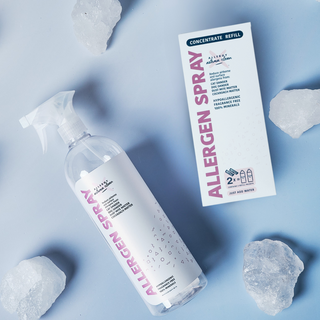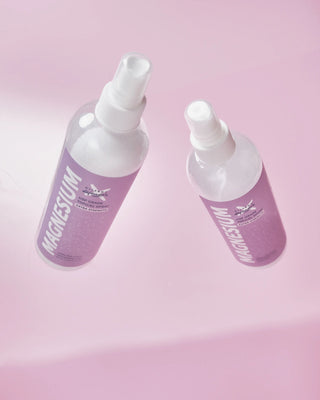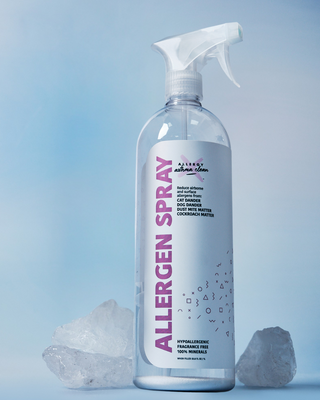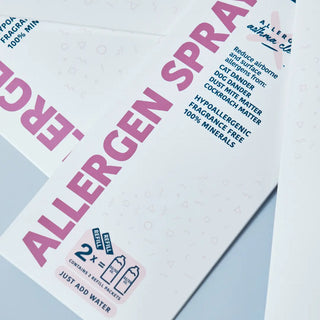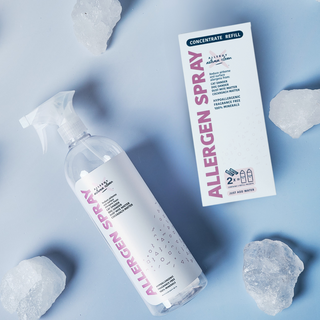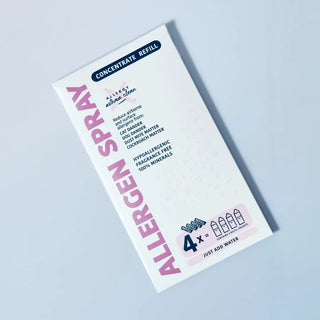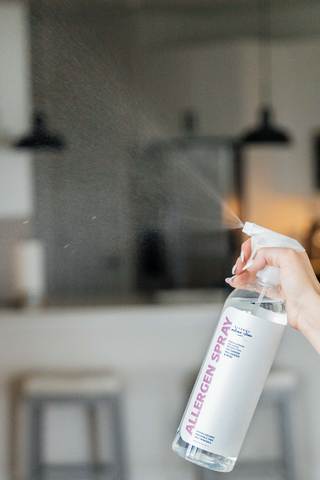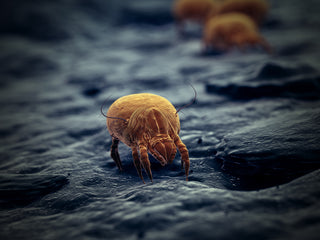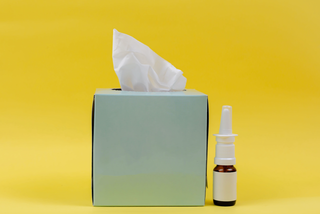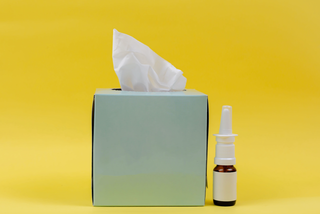Christmas trees carry allergens including weed pollen (collected when cut), mold spores (from moisture in trunk/branches), dust (on artificial trees), and chemical treatments (pesticides/preservatives). Symptoms include sneezing, itching, nasal congestion, watery eyes, coughing, and wheezing. Minimize reactions by choosing low-pollen species (fir/spruce over pine), shaking trees outdoors before bringing inside, vacuuming regularly around the tree, cleaning artificial trees before setup, using Allergy Asthma Clean Allergen Spray by Allergy Defender, and wiping ornaments to remove dust/mold before decorating.
Key Takeaways:
- Three main allergen sources – weed pollen collected on trees when cut, mold spores from moisture in trunk/branches, dust accumulation on artificial trees stored year-round
- Chemical sensitivities possible – pesticides and preservatives sprayed on trees can trigger reactions; choose organic/naturally grown trees or wash and air out before bringing indoors
- Low-pollen tree species – fir and spruce varieties have lower pollen levels than pine trees, reducing likelihood of triggering pollen allergies
- Pre-setup preparation essential – shake live trees outdoors to dislodge pollen/mold, hose down artificial trees outside and dry in garage, vacuum regularly around tree area
- Ornament allergens overlooked – inspect decorations for dust/mold before decorating, wipe with damp cloth, discard moldy items, store in sealed containers in cool/dry locations
- Allergy Asthma Clean Allergen Spray by Allergy Defender reduces allergens in room with tree and throughout house to minimize sneezing and congestion
I swear I am allergic to Christmas trees. When I was five, I had a hard time breathing. While I was at my grandma's many times before, adding Christmas trees to the mix seemed to take me over the edge.
While Christmas trees themselves may not be the direct cause of allergies, it's important to be aware of the potential allergens they can carry. If you are allergic to mold, dust, or pollen, taking measures to reduce exposure, such as cleaning the tree before setting it up or opting for an artificial tree, can help alleviate allergy symptoms during the Christmas season.
Pollen: Pollen's release from Christmas trees, specifically Pine Trees, is mostly observed during springtime. When the tree is brought indoors, it's not a significant factor, so your reaction is minimal. But, for individuals with pollen allergies, being near a Christmas tree can cause symptoms such as sneezing, itching, nasal congestion, and watery eyes. And what could be the pollen causing these symptoms? Weed pollens collect on the tree when it is typically cut down for the holiday. While the release of pollen is not significant indoors, it can still pose a risk for those with pollen allergies.
Mold: In addition to pollen, Christmas trees can harbor mold spores. Mold thrives in damp environments, and the moisture in a tree's trunk and branches can create an ideal breeding ground for mold. Breathing in mold spores can lead to allergic reactions, especially for those with mold allergies or asthma. So, if you are sensitive to mold, it's crucial to be cautious around Christmas trees.
Dust: Artificial Christmas trees, often stored in attics or basements for most of the year, can accumulate dust. Dust can trigger allergic symptoms such as coughing, wheezing, and itchy skin.
How to minimize the risk of allergic reactions from Christmas trees:
- Choose a low-pollen tree: Some species, such as fir or spruce, tend to have lower pollen levels than Pine Trees. Opting for these varieties may reduce the likelihood of triggering pollen allergies.
- Shake the tree: Before bringing a live Christmas tree into your home, give it a good shake outside to dislodge any loose pollen or mold spores. This can help minimize the amount of allergens released into your home.
- Keep the area around your tree clean: Regularly vacuum around your Christmas tree to remove any accumulated dust or pollen. This can help reduce the risk of allergic reactions.
- Consider artificial trees: If you or someone in your household has severe allergies, consider buying an artificial Christmas tree. These trees are typically made from metal and plastic, less likely to harbor allergens such as pollen or mold. If your tree doesn't contain any bulbs or electrical hardware, you can also hose down your tree outside before bringing it in. Allow it to dry in the garage with the door closed.
Furthermore, artificial Christmas trees, often stored in attics or basements for most of the year, can accumulate dust. Dust is a common allergen that can trigger allergic symptoms such as coughing, wheezing, and itchy skin. So, even if you opt for an artificial tree, it's important to give it a thorough cleaning before setting it up to minimize dust-related allergens.
- Use Allergen Spray: Consider using Allergen Spray in the room where the Christmas tree is located and in the rest of the house. It's perfect for reducing allergens so that you won't sneeze or blow your nose so often
- Consider alternative decorations: If you still experience allergic reactions despite taking precautions, consider using alternative decorations such as artificial foliage or non-allergenic ornaments such as plastic or glass. Paper or fabric tends to accumulate dust, so avoid these. And be sure to wrap your decorations up so they aren't exposed to dust all year long. A plastic garbage bag is ideal.
Christmas trees are sometimes sprayed with chemicals, such as pesticides and preservatives, to enhance their appearance and prolong freshness. However, these chemicals can trigger allergic reactions in sensitive individuals. For those with known chemical sensitivities or allergies, be cautious when handling or being close to treated trees. Opting for organic (yes, there really is such a thing) or naturally grown trees or thoroughly washing and airing out the tree before bringing it indoors works also.
Ornaments: To minimize the allergy potential of holiday ornaments, take some preventive measures. Before decorating, carefully inspect each decoration for signs of dust accumulation or mold growth. Wipe them down with a damp cloth or use a soft brush to remove dust particles. For moldy ornaments, consider tossing them.
Additionally, ensure proper storage of ornaments during the off-season. Store them in sealed containers or bags to prevent dust accumulation and protect them from moisture. Keeping them in a cool and dry location can also inhibit mold growth.
Who knew Christmas trees and ornaments could be a source of discomfort for individuals with allergies?
Quick Summary:
Choose the right tree species
Clean the tree using Allergen Spray
Consider alternative decorations that don't collect dust or mold
And my allergy to Christmas trees? Ok, dogs were involved too. I ended up in the hospital on Christmas Eve.

